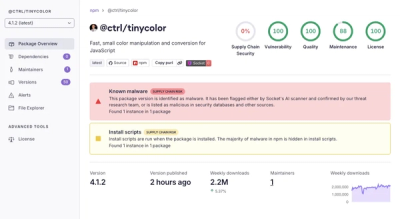appcache-node
###Let their browsers do the work
This module auto-generates your HTML5 Application Cache manifest, making it very easy to implement. In Node.JS, but for any web server. This makes for massive decrease on your server load.
###Installation
$ npm install appcache-node
Any HTML page with this will cache
<html manifest="app.cache">
In your app
var c = require('appcache-node');
// generate a cache file
var cf = c.newCache();
// in your request handler
if(r.url.match(/app\.cache$/)){
s.writeHead(200, {'Content-Type': 'text/cache-manifest'});
return s.end(cf);
}
While your HTML page caches automatically, you specify any JS, CSS, IMG, etc.. your page uses, so you have full control over which files are included in the cache.
var c = require('appcache-node')([
'http://netdna.bootstrapcdn.com/twitter-bootstrap/2.2.2/css/bootstrap-combined.min.css'
, 'http://netdna.bootstrapcdn.com/twitter-bootstrap/2.2.2/js/bootstrap.min.js'
]);
When you restart your app, the app.cache is rebuilt and so cache is cleared.
or here's a trick to have the cache reset every hour, if you want browsers to have to reload periodically.
// generate a cache file
var cf = c.newCache([
'http://netdna.bootstrapcdn.com/twitter-bootstrap/2.2.2/css/bootstrap-combined.min.css'
, 'http://netdna.bootstrapcdn.com/twitter-bootstrap/2.2.2/js/bootstrap.min.js'
]);
// optional - invalidate and reload the cache every 1 hour
setInterval(function(){
cf = c.newCache([
'http://netdna.bootstrapcdn.com/twitter-bootstrap/2.2.2/css/bootstrap-combined.min.css'
, 'http://netdna.bootstrapcdn.com/twitter-bootstrap/2.2.2/js/bootstrap.min.js'
])
}, 1000*60*60);
###toDataURI(filename)
A helper function is included, to convert images to data-uris, thereby embedding them into the HTML page, although this is not required to use the appcache.
var c = require('./appcache.js');
var duri = '<img src="' + c.toDataURI('./epic.png') + '"/>';
==> "<img src='data:image/png;base64,iVBORw0KGgo...'/>"
###Test
Run test.js to run an example web server.
More about the HTML5 Application Cache:
http://www.w3schools.com/html/html5_app_cache.asp



